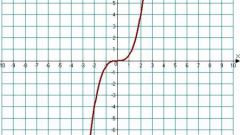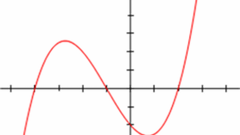Instruction
1
The most common method of solving equations of higher degrees is factorization. This approach is a combination of the selection of the integer roots of the divisors of the free term, and the subsequent division of the total polynomial by binomials of the form (x – x0).
2
For example, solve the equation x^4 + x3 + 2·x2 – x – 3 = 0.Solution.A free member of this polynomial is -3, therefore, its integer divisors can be numbers ±1 and ±3. Substitute them into the equation and see if it will work identity:1: 1 + 1 + 2 – 1 – 3 = 0.
3
4
Rewrite the equation in a new form (x - 1)·(x3 +2·x2 + 4·x + 3) = 0. The greatest degree of the polynomial was reduced to third. Continue to choose the roots for the cubic polynomial:1: 1 + 2 + 4 + 3 ≠ 0;-1: -1 + 2 – 4 + 3 = 0.
5
6
The discriminant is negative, then real roots the equation has no more. Find the complex roots of the equation:x = (-2 + i·√11)/2 and x = (-2 – i·√11)/2.
7
Write down the answer:x1,2 = ±1; x3,4 = -1/2 ± i·√11/2.
8
Another method for solving equations of higher degree – change of variables to bring it to the square. This approach is used when all of the degree of the equation is even, for example:x^4 – 13·x2 + 36 = 0
9
This equation is called a biquadratic. To bring it to square, make the substitution y = x2. Then:y2 – 13·y + 36 = 0D = 169 – 4·36 = 25y1 = (13 + 5)/2 = 9; y2 = (13 - 5)/2 = 4.
10
Now find the roots of the original equation:x1 = √9 = ±3; x2 = √4 = ±2.






